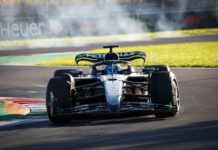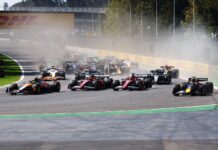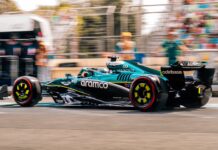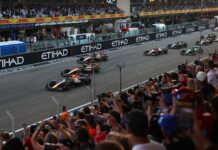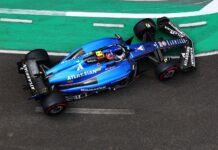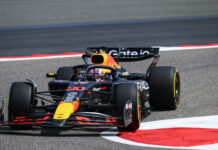In the 24th episode of Formula 1’s ‘Beyond The Grid’ podcast, Otmar Szafnauer speaks on his early days in American racing, working for Vijay Mallya and now Lawrence Stroll, Force India journey and Racing Point’s future, Lance Stroll’s driving and more.
Szafnauer starts the Beyond The Grid podcast talking about the troubles faced by Force India in 2018 which already started with the winter testing. The car they built for the test was supposed to be upgraded by Australia but it did not happen.
He reveals about the administration process. Apart from the shareholder and the team’s deputy team principal Robert Fernley, the 54-year-old said that no one left the team despite offers from rival outfits like McLaren, Williams, Renault.
Speaking about the buyout by Stroll and his consortium, Szafnauer believes smartness and luck played a big role in him getting the nod as the bid from their side was not only to buy the assets but also the shares of the team which no other bidder thought about.
He then talks about his former boss Mallya and the current boss Stroll – the former was more working from the outside with Szafnauer and Fernley put in charge, while the latter is working on the day-to-day basis for now.
He feels there are pros and cons associated with both the working ways. Talking about the changes, Szafnauer believes the injected finance will only reap benefit from the 2020 season rather than have straight impact from 2019.
In terms of the name change, it is certain that ‘Force India’ is out of the picture with Racing Point being the makeshift name put up when the team was bought by the consortium. He expects and wants the name to be changed before 2019 but doesn’t guarantee the change.
He then goes back to his roots and move to America where he began his journey working for Ford after which he got the racing hat on in Formula Ford with his own team. He talks about his journey into F1 with BAR in 1998.
His next move was with Honda but that came at a cost as he had to sit out for some time under the gardening leave scheme. Post working with Honda, he moved to start the live timing app for F1 with Soft Pauer.
He then went to McLaren for a job through which he was put in Force India under Mallya and has stayed since with the team – where he has brought about significant changes working with Fernley until the present stage.
He reveals about the things they have done over the years and the plans they have for the future. While talking about the drivers he worked with, he did not want to pin point his favourites as such.
But he regarded the likes of Jacques Villeneuve, Rubens Barrichello, Adrian Sutil, Nico Hulkenberg, Paul di Resta, Sergio Perez and Esteban Ocon well. For the newcomer Stroll, Szafnauer felt the Canadian is already on the level of Ocon in the simulator.
It is now for Stroll to back it up on track when he makes his racing debut in the new colours in 2019. For now, he doesn’t want to predict how the team will perform in 2019 as he feels the midfield will be tighter than ever.
Excerpts from the podcast:
“All those types of things we’re discussing now,” said Szafnauer. “So a bigger factory – but to build a bigger factory, you’ve got to buy the land first. Also within the factory, to detail what type of equipment [we] want, how much of it, what is important, what isn’t important.
“All of this while we mustn’t take our eye off the ball – that is, building, designing, producing and developing a competitive racing car. I’ve seen it so many times where teams have decided to either build a new wind tunnel or a new factory or new facilities, and the performance of the car suffered because the same people that design and specify a factory are the same ones that design and specify the racing car.
“If you’re doing one you can’t be doing the other. So we’ve got to be very careful that if we do embark – and we will embark – on improving our facilities and infrastructure, that the car doesn’t suffer.
“We’ve got… to continue to maintain that efficient nature that we have. We can’t lose that, and if you do have a little bit more financial resource but you stay efficient, then your output should be even better.
“The risk is that, if you’ve got significantly more financial resource, you lose the efficiency, and then your output is no better, but you’ve spent a lot of money – or even worse, your output can be worse and you’ve spent a bunch of money.
So we’ve got to consciously be aware that that can happen and make sure it doesn’t happen to us. “I think 2020 will see a bigger change than from ‘18 to ’19. There are things that we learned recently that will help the 2019 car.
“However, having said that, predominantly the 2019 car was designed, or the backbone of it was designed, by the time the consortium took over. The chassis was being manufactured already.”
[Listen: Carlos Sainz]


